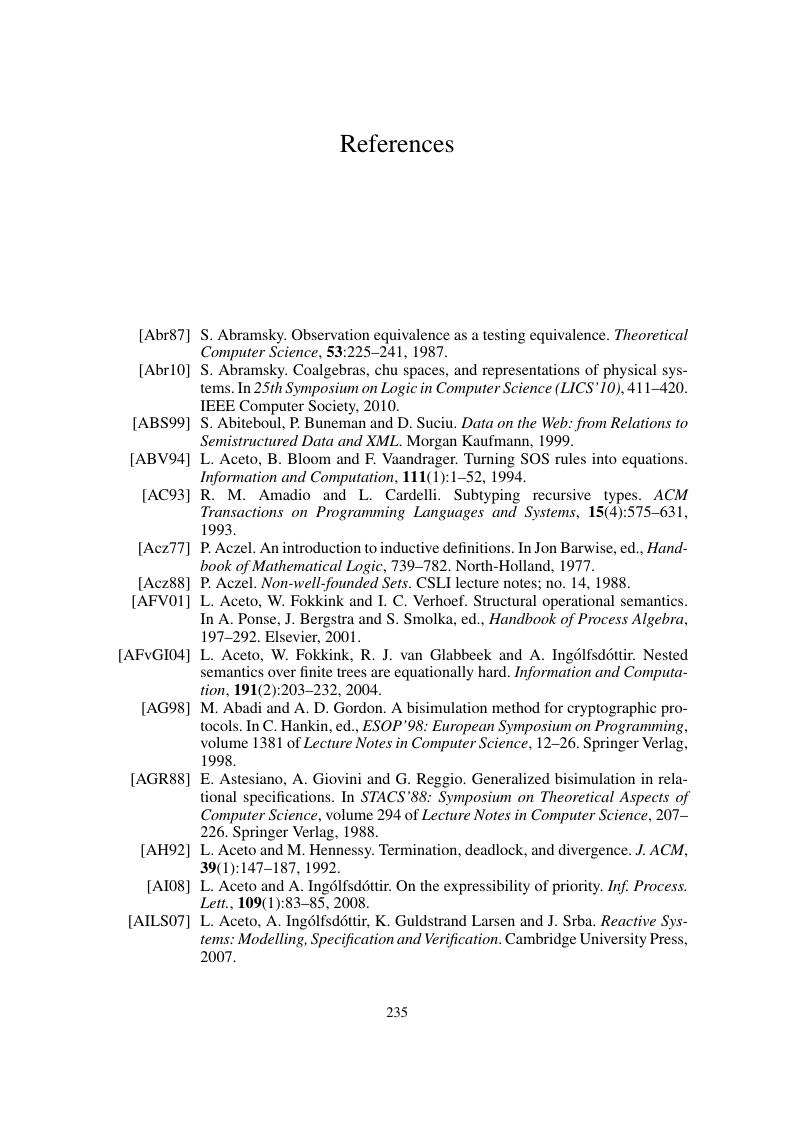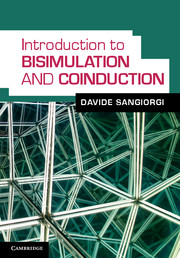Book contents
- Frontmatter
- Contents
- List of illustrations
- Preface
- General introduction
- 1 Towards bisimulation
- 2 Coinduction and the duality with induction
- 3 Algebraic properties of bisimilarity
- 4 Processes with internal activities
- 5 Other approaches to behavioural equivalences
- 6 Refinements of simulation
- 7 Basic observables
- Appendix A Solutions to selected exercises
- List of notation
- References
- Index
- References
References
Published online by Cambridge University Press: 05 August 2012
- Frontmatter
- Contents
- List of illustrations
- Preface
- General introduction
- 1 Towards bisimulation
- 2 Coinduction and the duality with induction
- 3 Algebraic properties of bisimilarity
- 4 Processes with internal activities
- 5 Other approaches to behavioural equivalences
- 6 Refinements of simulation
- 7 Basic observables
- Appendix A Solutions to selected exercises
- List of notation
- References
- Index
- References
Summary

Information
- Type
- Chapter
- Information
- Introduction to Bisimulation and Coinduction , pp. 235 - 243Publisher: Cambridge University PressPrint publication year: 2011
